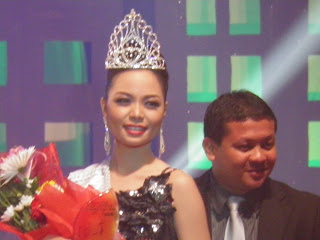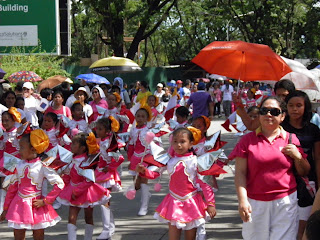The belief of an almighty creator is an inherent nature of
man. To cater to that belief, some people established religions that attracted
large number of people. These religions even survive long after the death of
their founders. By following a religion, a man has to suit his lifestyle in a
way that his religion requires him. People’s collective adherence to a belief
will somehow create a distinctive culture in a community. Indeed, religion has
a profound impact on the social, political and cultural aspects of our lives. Since
time immemorial many religions have been created and their struggle for expansion
and dominance have resulted to the demise of empires, the change of the ethnic
composition of a territory, the eruption of armed conflicts and the boom and
decline of trade and commerce.
Christianity and
Islam are the two religions that
in one way or the other affected the way many people live their lives in the
past and present.
Jesus Christ and
Christianity
The largest religion on earth was founded by a man named
Jesus who was born in
Bethlehem in Judea at around 6 AD during the reign of
Roman Emperor Augustus Caesar. Little was known about his life in his younger
age. He started his public ministry at the age of 30. With the help of his 12
disciples he preached to the people and healed the physically and spiritually
sick. He told of the imminent coming of the
Kingdom of God and of salvation.
The
Jewish high priests did not see Jesus’ activities in good light. For them
he was a violator of the Jewish customs and traditions, and his claim to be the
Messiah, the king of the Jews and the Son of God was highly blasphemous that
called for a death penalty. The high priests plotted against him and put
pressure on
Pontius Pilate, the Roman governor, to have him executed. To
appease the Jews and to prevent them from rioting, Pontius Pilate had Jesus
crucified.
Contrary to what the Jewish high priests and Roman
authorities expected, the death of Jesus did not end the movement that he
founded. His disciples and other
followers who denied and abandoned him when he was tried and executed became fearless
even to the point of death to vouch for him. Many of them claimed to have seen
the
resurrected Jesus before his ascension to heaven. For Jesus disciples and
followers he was what he claimed to be.
Christianity is a religion that believes that spiritual
salvation can only be obtained through Jesus. Christians also believe that
Jesus is God’s promise Messiah whose life, death and resurrection fulfilled the
prophecies of the
Holy Bible. Different Christian denominations however are in
constant disagreement as to the nature and or divinity of Jesus.
The early Christians were persecuted by the Jews and Romans
and were falsely accused of having caused the disasters and other unfavorable
things that happened in their community. However, despite the hardships and
difficulties, they continued to spread the teachings of Christ.
Things started to change for the better for the Christians during
the reign of Roman Emperor
Constantine I. He allowed freedom of worship in the
empire. It was said that he saw a vision of the cross against the sun at the
Battle of the Melvian Bridge in 312 AD, and that the sign would give him
victory. Constantine later defeated his rivals and became the sole Roman
emperor. The conversion of Constantine to Christianity which he made as the
official religion of the empire enabled it to spread like wildfire within its
territories. The Romans’ acceptance of Christianity also effectively eradicated
their old polytheistic pagan belief.
During his reign Constantine transferred his capital from
Rome to
Byzantium, which was later called Constantinople in 330 AD. His move
divided the empire into east and west, and the east became known as the Byzantine
Empire.
Muhammad and Islam
Muhammad was born in 570 AD in Mecca. He became an orphan in
his early childhood and at age 25 he married a rich widow named Khadija.
Becoming a merchant, he traveled to Syria where he came into contact with Jews
and Christians. At age 40 Muhammad had a vision of the Angel Gabriel in a cave which
ordered him to go forth and preach. At first Muhammad was so afraid of the
vision that he even believed that it was a malevolent spirit. However, his wife
convinced him that it was from God.
Muhammad was later convinced that he was indeed a messenger
of God. He started to preach, but was able only to get few converts. His
activities put him in a collision course with the religious leaders of Mecca,
who plotted for his life. Muhammad and his followers fled to Medina in 622 AD. His departure was referred by Muslims as
Hegira. Muhammad established an Islamic community in Medina and gained religious
as well as political prominence. He was victorious in the Battle of Badr and
Uhud and captured Mecca with little bloodshed. He then cleansed the Kaaba of
idols and converted the people there of his new religion.
During his lifetime Muhammad was able to convert all of Arabia
to his new religion which is called Islam or submission. In the centuries after
his death in 632 AD Muslim armies spread the faith by conquest and conversion
and forged an Arab empire that stretched from Spain to India.
Islam is a monotheistic religion that has some component of
Judaism and Christianity. Muslims live by abiding with the five pillars of
their faith. They are: shahada-
professing that Allah is the only God
and Muhammad is His prophet; salat-
praying 5 times a day; zakat- giving
alms to the poor; sawm of Ramadan-
fasting during the holy month and haj-
the pilgrimage to Mecca. Islam’s holy book is called the Koran which Muslims
believe as the literal words of Allah. Muslims governs their action based on
the Sharia, a legal system that is
adopted from the Koran.
Muslims and Christian
Conflicts
After Muhammad’s death, his armies conquered the
Zoroastrians in Persia and the Pagans of Arabia and the Jews and the Christians
in Egypt, Lebanon, Jordan, Syria and Palestine and in the process replacing the
original dominant religions with Islam.
Having conquered much of the east, the Muslims trained their
eyes on Europe. The Moors and the Arabs crossed into the Iberian Peninsula and
occupied Spain. Advancing toward the north, they crossed the Pyrenees Mountains
but were halted by Charles Martel who defeated them at the Battle of Tours in
732 AD and forced them to retreat back to Spain where they stayed and established
their own dynasty.
In Anatolia the Turks posed a grave threat to the Byzantine
Empire. The Turks were nomadic people from central Asia who migrated to the
Middle East and to Asia Minor. They were converted to Islam and championed the
religion. Overtime, they became the power to be reckoned with in those areas.
The Turks defeated the Byzantine forces at the Battle of Manzikert in 1071 in
which Emperor Romanus IV was captured by Turkish leader Alp Arslan. Their
capture of Jerusalem made it difficult for Christian pilgrims to visit their
holy places.
To eliminate the threat of the Turks on the Byzantine Empire
and to free Palestine from them, Pope Urban organized the crusades to deal with
the situation. The crusaders were composed of troops from different European
nationalities. There were eight crusades that were launched from 1095 to 1270.
But these military campaigns ended mostly in failures because of the mutual
distrust among their leaders and the primary cause of the crusades was obscured
by their selfish political and economic interests. The fourth crusade in 1204 was
diverted to Constantinople and sacked the city and replaced the rulers there with
Latin emperors, an action that alienated the Byzantine subjects from their
Christian allies.
Victories and Defeats
The marriage of King Ferdinand II of Aragon and Queen Isabella
I of Castile strengthened their Christians kingdoms in Spain. Their combined forces defeated the last
Moorish kingdom of Granada in 1492, and the Moors were expelled from Spain. At
first the Muslims and the Jews who opted to stay in the country were treated
fairly. But later, the inquisitions made many of them leave Spain.
The Ottoman Turks were able to take over large area of Asia
Minor and conquered some countries in the Balkan Peninsula thereby surrounding
the city of Constantinople the seat of the Byzantine Empire and Christendom’s
second most important city after Rome. It was just a matter of time before the
moribund Byzantine Empire with its capital city would fall to the Muslim Turks.
Finally, on May 29, 1453, forces under Sultan Muhammad II laid siege to the city
and successfully captured it. The fall of Constantinople marked the end of the
Byzantine Empire which was supplanted by the Ottoman Empire which made
Constantinople as its capital. The Ottomans wanted to take Europe for Islam. Led
by Suleiman the Magnificent, they attempted to cross Western Europe through
Vienna in 1529. However, they were driven back by the city’s defending troops.
Alternative Trade
Routes to the Sea and the Age of Exploration
The control of important traditional trade routes by the
Muslims made it difficult and expensive for goods such as spices from Asia to
reach Europe. To get around the trade routes that were in the hands of the
Arabs and Turks, Christian European kingdoms particularly Spain and Portugal
looked to the sea to reach India where those goods were said to come from.
Early explorers thought that the source of spices in the east could be reached
through the sea by sailing westward, and around the Cape of Good Hope. Queen
Isabella sponsored and financed the expedition of Christopher Columbus into the
Indies in 1492. He was not able to reach India although he discovered a vast
unexplored land that was later named the America.
Columbus exploration paved the way to the settlement of new
lands that were at that time unknown to Europe. Other European powers such as
Britain, France and Netherlands joined Spain and Portugal in the exploration of
the New World. As a result, colonies were established which later became independent
countries. New countries such as United States, Mexico, and Brazil among others
were born. Their people are composed of indigenous inhabitants and settlers of
divergent nationalities around the world.
Some countries such as the United States and Canada even became richer
and greater than their former mother countries.
The discovery of new lands during the Age of Explorations
enabled the European powers to extend their territories beyond the sea. It
provided them economic benefit and enabled them to propagate their traditions, language,
culture and religion in those lands. Somehow, the Age of Exploration has paved
the way for the spread Christianity outside of Europe and the Middle East.
Although many people believe in God and adhere to a religious belief, there are
others who consider religion as absurdity. But it is an undeniable fact that
religion is one of the factors that shaped the courses of events in history.
Related articles:















































